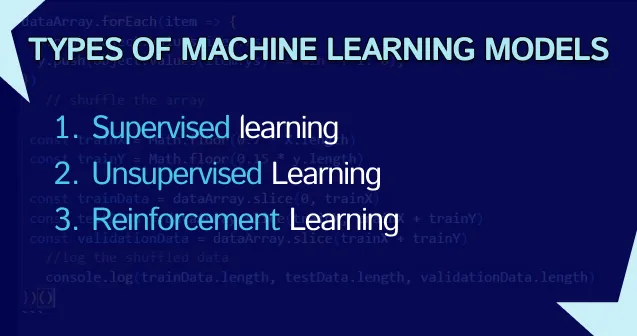
Implementing a Convolutional Neural Network (CNN) in TensorFlow.js Using Tabular Data
Learn how to implement a convolutional neural network (CNN) in TensorFlow.js using a tabular dataset. This step-by-step guide covers data preprocessing, model architecture, training, and evaluation for binary classification tasks.
· tutorials · 2 minutes
Implementing a CNN in TensorFlow.js Using Tabular Data
Convolutional Neural Networks (CNNs) are typically used for image data, but their underlying principles can be applied to structured tabular datasets by reshaping the data to mimic image-like structures. In this guide, we explore how to implement a CNN for binary classification using a sample tabular dataset in TensorFlow.js.
Dataset Overview
The dataset includes the following columns:
- Numerical Features:
high,low,bullishCandles,entryPrice, etc. - Categorical Features:
tradeType(e.g., “Buy”). - Target Variable:
outcomeBinary(winorlose).
Our goal is to classify whether the outcome (win or lose) occurs based on these features.
Step 1: Preprocessing the Dataset
To train a CNN, the tabular data needs to be reshaped into a format compatible with convolutional layers, similar to how image data is represented.
import * as tf from '@tensorflow/tfjs';
// Raw tabular datasetconst rawData = [ { high: 2363.35, low: 2361.75, entryPrice: 2363.43, tradeType: 'Buy', outcomeBinary: 'win' }, { high: 2363.35, low: 2361.75, entryPrice: 2363.27, tradeType: 'Buy', outcomeBinary: 'win' }, { high: 2363.93, low: 2362.08, entryPrice: 2363.99, tradeType: 'Buy', outcomeBinary: 'lose' }, // More rows...];
// Map categorical labels to numerical valuesconst preprocessData = (data) => data.map(row => ({ high: row.high, low: row.low, entryPrice: row.entryPrice, outcome: row.outcomeBinary === 'win' ? 1 : 0, // Binary label}));
const processedData = preprocessData(rawData);
// Extract features and labelsconst features = processedData.map(row => [row.high, row.low, row.entryPrice]);const labels = processedData.map(row => row.outcome);
// Convert to tensorsconst xs = tf.tensor3d(features, [features.length, 3, 1]); // Reshape to 3D tensor for CNNconst ys = tf.tensor1d(labels, 'int32');Step 2: Designing the CNN Architecture
We will design a simple CNN with convolutional layers, pooling layers, and fully connected layers to classify the outcomes.
const model = tf.sequential();
// Add a convolutional layermodel.add(tf.layers.conv1d({ inputShape: [3, 1], // 3 features, 1 channel filters: 16, // Number of filters kernelSize: 2, // Kernel size activation: 'relu'}));
// Add a pooling layermodel.add(tf.layers.maxPooling1d({ poolSize: 2 }));
// Add another convolutional layermodel.add(tf.layers.conv1d({ filters: 32, kernelSize: 2, activation: 'relu'}));
// Flatten the outputmodel.add(tf.layers.flatten());
// Add a dense layermodel.add(tf.layers.dense({ units: 64, activation: 'relu' }));
// Add the output layermodel.add(tf.layers.dense({ units: 1, activation: 'sigmoid' })); // Binary classification
// Compile the modelmodel.compile({ optimizer: tf.train.adam(), loss: 'binaryCrossentropy', metrics: ['accuracy'],});Step 3: Training the Model
We will train the model using the preprocessed data.
(async () => { await model.fit(xs, ys, { epochs: 50, batchSize: 16, validationSplit: 0.2, // Reserve 20% for validation callbacks: { onEpochEnd: (epoch, logs) => { console.log(`Epoch ${epoch + 1}: Loss = ${logs.loss}, Accuracy = ${logs.acc}`); }, }, });})();Step 4: Evaluating the Model
After training, evaluate the model on unseen data to test its performance.
const evaluation = model.evaluate(xs, ys);evaluation[0].print(); // Lossevaluation[1].print(); // AccuracyBest Practices for Using CNNs with Tabular Data
-
Reshape Input Data: Transform tabular data into 3D tensors to utilize convolutional layers.
-
Feature Scaling: Normalize numerical features to improve model performance.
-
Regularization: Use dropout layers to reduce overfitting.
-
Learning Rate Tuning: Experiment with learning rates to optimize training.
More posts
-

Understanding Activation Functions in TensorFlow
Learn about activation functions in TensorFlow, their role in neural networks, and why they are crucial for enabling non-linear decision-making capabilities.
-

Types of Machine Learning Models: Explained with Examples
Explore the three main types of machine learning models—supervised, unsupervised, and reinforcement learning—with clear explanations and practical examples in TensorFlow.js.
-

Using Pre-Trained Models for Transfer Learning in TensorFlow.js
Learn how to leverage pre-trained models in TensorFlow.js for transfer learning on tabular data. This guide walks you through using a pre-trained model to improve performance on a structured dataset.